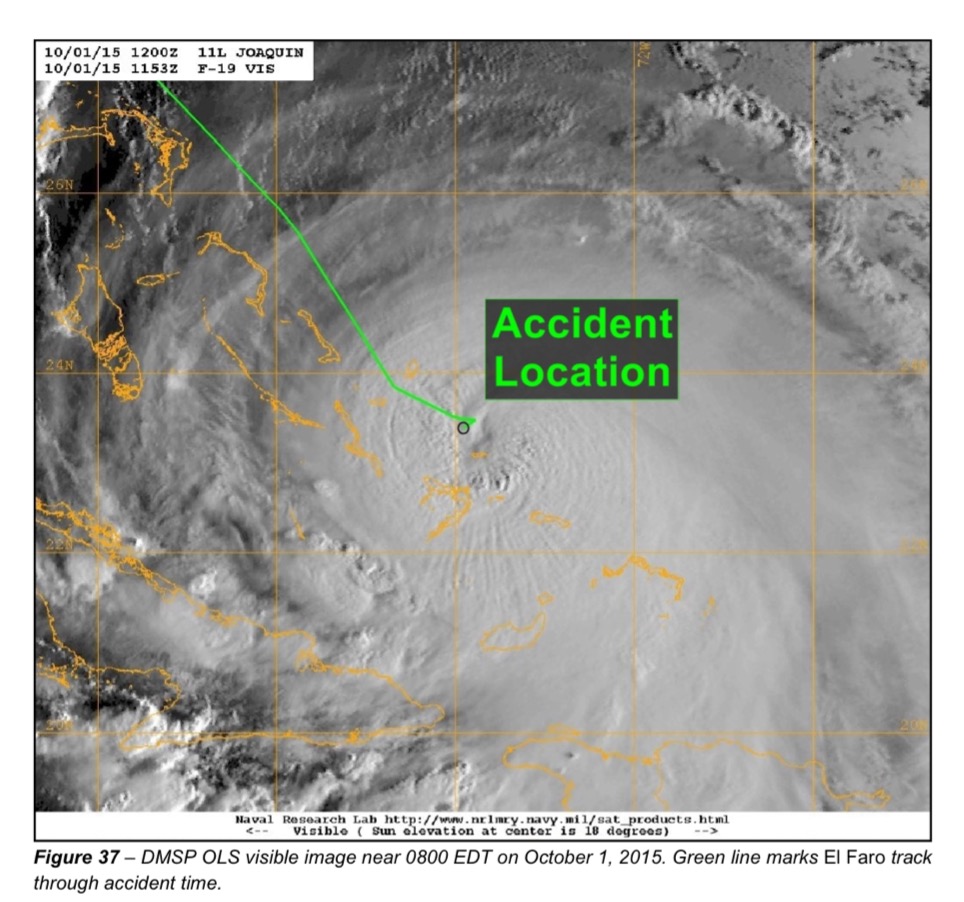Document 55 of the docket is a very complete description of how TOTE loaded their ships at Jax.
With respect to this thread subject - within that transcript is the following exchange about weather program. (errata page shows that BBS should be BVS) The interesting part is the apparent freedom with which masters could select their routing, even to accommodate livestock. Does this square with the actual feeling of Masters though, I’m thinking of the section of the VDR voice transcript where the master was already lining up his ducks to take an alternate route north by informing the office but seemed hesitant to change route going south. (bold face added)
MR. KUCHARSKI: Okay, thank you, thank you.
Shifting gears a little bit now to weather related, are
you familiar with the BBS Applied Weapon Technology’s
program that the El Faro had?
MR. MATTHEWS: Yes, basically familiar. I’m
not deeply familiar with it, but I have seen it.
MR. KUCHARSKI: Okay. Were you involved at
all with the load-up of that program on the ship or the
contracting to get that service?
MR. MATTHEWS: I am the one that actually,
when BBS – I forget the – Bill Howshour (phonetic) or
whatever, the sale guys, came through here. He showed
us what it was, and I recommended it to captains. This
goes back several years. I was involved somehow in the
process of recommending that people review it and, if
they decided they like it, to get it for the vessels.
For signing the actual contracts, I was not, but I was,
again, going back several years, I was somehow involved
in the process of seeing it and bringing it on board.
MR. KUCHARSKI: Okay. Do you know who
actually approved the contract?
MR. MATTHEWS: That is so long ago, to be
honest, no, I do not.
MR. KUCHARSKI: Okay. Did you have – so
you didn’t have access to the BBS system on shoreside?
MR. MATTHEWS: No, we don’t have that
shoreside. The actual BBS, this goes to the ships.
MR. KUCHARSKI: Okay, great. Do you
remember having any conversations with Captain Axelson
or any of the other masters about weather routing?
MR. MATTHEWS: I have had conversations with
the captains, and they actually, they liked the program
that they have. On occasion, they’ll tell me they’re
going down the Old Bahama Channel or maybe through the
Providence Channel after they have reviewed the weather
programs that they have. BBS is only one that I know
of that they use. I believe there’s a couple of others
out there. I think NOAA has one and underground
weather, something like that. They have several
sources, BBS being probably the most graphic that you
can understand, from what I have seen. But as far as
weather routing goes, they chose their own routes.
They decided that.
MR. KUCHARSKI: Okay. So you didn’t have
any specific conversations as far as adding weather
routing to the BBS suite?
MR. MATTHEWS: Oh, no, no, to the BBS suite,
their weather-routing option? No, no, not at all.
MR. KUCHARSKI: Okay, okay. Great, great.
And did you have any discussions with the masters
typically about weather expected on the voyage?
MR. MATTHEWS: Generally, whether it was
going to be rough, whether it was not. We ship
livestock on occasion, so if we’ve got any livestock,
if we’re planning to ship livestock, I’ll reach out to
them to let us know if it looks too rough or not to
take them, as they are rather sensitive to the rough
seas. If something looked like a nor’easter or
whatever it happened to be, it looked like they wanted
to take the Old Bahama Channel staying closer to the
coast, adding time to the trip for a little smoother
trip, they would let me know that they were going to do
it and I would pass that on to my chain of command so
that they could notify the customers, hey, the ship is
going to be six hours late just for scheduling the
cargo pickup.
So just as general information, I would talk
to them about it, but not in a sense of instructing
them or suggesting anything to them on what they needed
to do.
